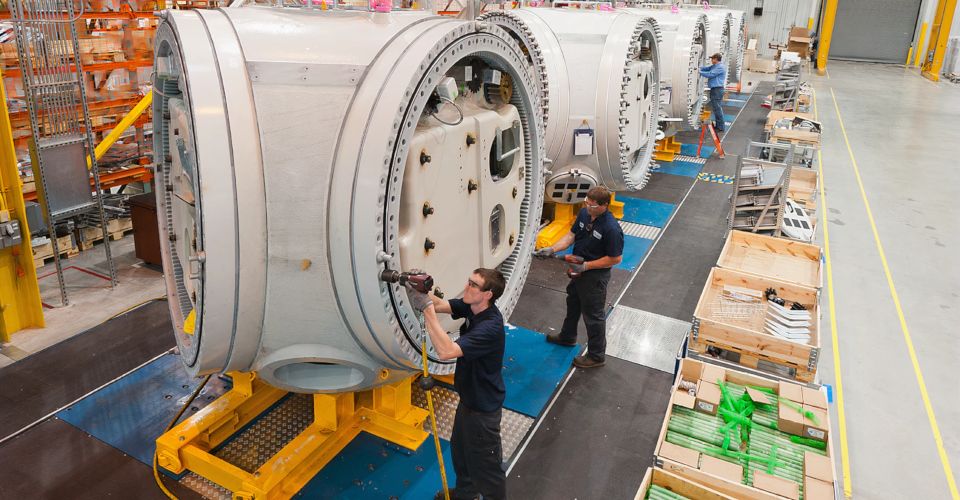A List of the Most Common Manufacturing Processes
The journey from raw materials to finished goods involves several steps, driven by both automated machines and manual labor. These sub-processes have been refined through the decades to ensure the highest possible level of quality and reliability while still being economically viable. With the products of manufacturing processes being so common, it’s easy to take for granted just how complex they actually are.
In this article, we take a look at the broad classifications of common manufacturing processes, how they work, and look at examples of each one. With this, we hope to have a better appreciation of how raw materials end up as the objects we use in our daily lives.
1. Forming
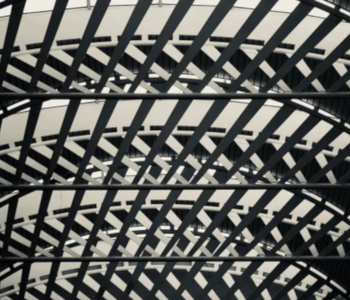
Forming refers to the deformation of a material to a more desired shape without the addition or removal of any of the material. This process relies on the principle of plastic deformation, or the ability of certain materials to undergo an alteration of their shapes in a manner that cannot be undone by the simple application of force. Although forming is typically used to refer to a metalworking technique, the deformation of thermoplastics can also be considered an example of forming.
All types of forming processes require the application of very high loads and stresses. The manner in which these stresses are applied may differ from one process to the next depending on the desired final form of the original material. In any case, the machinery used in forming is typically heavy-duty, large, and relatively expensive. Thus, a forming process will be designed to take advantage of an economy of scale and process a high volume of orders.
Compressive forming
In compressive forming, compressive stress is applied to the material either on a single axis or multiple axes. This results in an alternation of the shape of the material that follows a pre-determined orifice or die. Aside from excellent uniformity, the application of compressive stresses has the potential to result in the strengthening of the material being processed.
One of the more common examples of compressive forming is extrusion – a process where a material is pushed through an orifice with a fixed cross-section. This is a process used to manufacture metal beams for construction, plastic pellets, or food products such as pasta and pet food.
Forging is another compressive technique that applies more localized application compressive stress. By applying large stresses using hammers, sections of a material can be molded into the desired shape. This technique has been used to craft jewelry, kitchenware, and hand tools. If you’ve ever seen an old-timey film where a craftsman pounds a sword with a hammer, then you’ve seen an early example of forging.
Tensile forming
The polar opposite of compressive forming, tensile forming involves the application of stress that results in the stretching of the material. Pure tensile processes are quite rare. In most cases, tensile stress is applied in combination with compressive stress, such as in pulling material through a die or the manufacture of flanges.
Pure tensile forming processes may involve the punching of a die into a sheet to create a dome, bending of a sheet against a die, or the expansion of a tubular pipe by hydraulic fluid.
Shearing
Shearing, a method of metal spinning, alters the shape of a material via the application of shear forces. It is typically done to convert a flat metal sheet into one with a concave or convex shape.
A shear forming machine is comprised of two basic parts: a mandrel that determines the shape of the final part, and a roller that presses the metal against the mandrel. As the mandrel rotates, it is pushed against the metal by a roller, thus creating a shear force that deforms the metal sheet. The thickness of the final part can also be controlled by altering the clearance of the roller with the mandrel.
The process of metal spinning relies on a characteristic of a metal called its spinnability, or its ability to withstand deformation via shear forces without overcoming its tensile strength. The spinnability of a metal is proportional to its ductility. Thus, highly ductile metals like aluminum and steel alloys are the best choices for shearing.
Bending
Bending refers to the process of creating U-shaped or V-shaped bends on a material, typically sheet or tubular metal. Although the application of stresses to achieve bending coincide with either compressive or tensile techniques, the bending process is mostly identified via the form factor of its finished products.
Most bending processes are achieved via the material being pressed between a top die and a bottom die, eventually taking the shape of these two interlocking parts. Other bending processes are merely variations of this technique, using dies of various shapes or even rollers to bend a sheet metal into a curve.
2. Casting
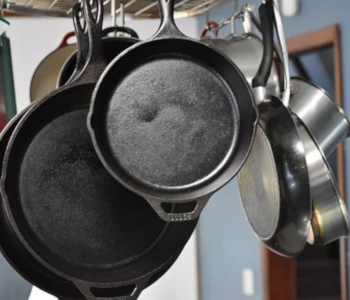
In casting, the solid material is molten into a liquid by heating to the appropriate temperature and transferred into a mold or cavity, thereby taking its shape. Upon re-solidification, the finished part is broken out of the mold.
Casting is a common method in metalworking, although the heat requirement makes it very energy-intensive. Two-component resins are also very good materials for casting, especially since they only start curing or chemically setting once the components have been mixed.
Despite the seeming simplicity of the method, there are about a dozen different casting methods. The difference between them lies in the shape of the molds being used and how these molds are created.
Die casting
The most common form of casting, die casting is simply the introduction of molten metal into a cavity under high pressure. Although die casting is a simple process, the hardened steel dies have to be machined into high-precision shapes and is a huge capital investment for high-volume production.
The mold used in die casting is made of a top (cover) and bottom (ejector) part separated by a parting line. The internal cavity of the mold is treated with a lubricant prior to the introduction of molten metal. Filling is done under high pressure – anywhere between 10 to 175 megapascals. This pressure is maintained as the metal cools and solidifies. The mold is then opened and the finished part is ejected.
The high capital cost of manufacturing the molds is the single biggest drawback of die casting. However, it is a highly reliable technique that produces parts with good dimensional accuracy and high tensile strength.
Centrifugal casting
Centrifugal casting is a technique used to manufacture thin-walled cylindrical parts from molten material. It is commonly done using metals but is also a suitable technique for glass, plastic, or concrete.
Just as with die casting, centrifugal casting starts with a permanent mold. This cylindrical mold can be made with hard steel, metals, or heavy-duty plastic. As molten material is poured into the mold, the mold rapidly rotates around its axis of symmetry as speeds ranging from 300 to 3000 rpm. The centrifugal force created by this rapid rotation results in the material being spread evenly around the inner walls of the mold.
Centrifugal casting is pretty much the go-to technique for the manufacture of cylindrical parts. It’s fast, versatile, and produces parts with good mechanical properties. A single mold can be used to create parts with varying wall thickness by simply altering the amount of molten material fed into it.
Investment casting
Investment casting, also known as lost-wax casting, starts with a prototype that is crafted from wax. The wax prototype is based on a master pattern created by an artist or mold-maker from several possible materials including wood, plastic, or clay. A mold is then created from the master pattern, typically using rubber.
From the rubber mold, wax patterns are made simply by pouring molten wax into the mold. Multiple wax patterns can be made and assembled together to form bigger parts. Another option is to make a sprue – a cluster of multiple wax patterns arranged into a tree. A sprue makes it possible to make an investment cast containing multiple copies of the same pattern.
Investment materials are then applied to the wax patterns. This is typically a ceramic material applied via a series of coating and hardening steps to gradually form a solid mold. A finished investment mold will have a thickness between 5 to 15 millimeters.
The final step of creating an investment cast is the removal of the wax pattern by allowing it to melt or vaporize out of the mold. To achieve this, a drain has to be integrated into the design of the mold, typically by drilling. The investment cast can then be opened up to remove some of its impurities, thus allowing for the production of more dimensionally accurate parts.
3. Additive manufacturing
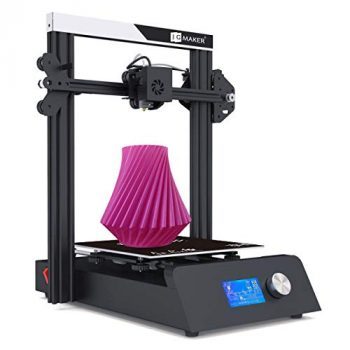
A relatively new manufacturing technique, additive manufacturing relies on layer-by-layer construction of a part based on a prescribed model. In virtually all types of additive manufacturing, this is a computer-aided process that uses a 3D model as a reference.
Additive manufacturing represents a huge paradigm shift in the manufacturing industry. It is a technique that does not rely on a prefabricated mold or a modification of the material’s original geometry. Instead, the design process can be done completely through a CAD software platform. This is a level of design freedom that has not been achieved before by any of the other manufacturing processes.
However, additive manufacturing is still not the perfect manufacturing technology. Although it’s capable of reproducing highly complex designs, additive manufacturing methods are typically too slow for high-volume production. Parts made from additive manufacturing also lack the strength of those made via casting or forming.
Fused deposition modeling
In fused deposition modeling, parts are made by melting a filament material and laying it down across a print bed according to a pattern dictated by a 3D model. The movement of the nozzle is controlled by a software that separates the model into “slices” which are then transformed into layers of filament material.
FDM is one of the most basic forms of 3D printing. FDM printers are cheap enough for hobbyists, spawning a global community of 3D printing enthusiasts who freely share 3D models and self-improvement tips. FDM is also a very user-friendly technology, further facilitating its mainstream adoption.
There are two major flaws to FDM-based 3D printing – it’s slow, and the layer lines are inherent weak points. Although FDM is great for creating functional prototypes, they aren’t made to handle immense loads.
Stereolithography
Stereolithography (SLA) is an earlier form of 3D printing, although it has been overshadowed in popularity by FDM. Instead of a filament, the raw material in SLA is plastic resin. More specifically, this resin is a photopolymer or a liquid polymer that forms more chains when exposed to ultraviolet light. This results in an almost instant conversion of the polymer from liquid to solid.
Compared to FDM, SLA is a much faster additive manufacturing process. It has fewer moving parts on account of a UV light source which only needs to be redirected to trace a pre-described pattern. The layer lines of parts made via SLA are also less prominent, giving them a smoother finish and a higher overall strength.
The major factor for why SLA has not hit the mainstream as easily as the FDM is its cost. Not only are SLA printers more expensive and less accessible, but even the liquid resin used by SLA prints cost more than an equivalent weight of plastic filament. For many hobbyists and professional users, there is little reason to spend more on SLA printing if FDM printing already satisfies their requirements.
4. Joining

Simply put, joining is the process in which two or more parts are put together. This definition may be deceptively simple, as joining is one of the most diverse manufacturing processes. There are likely hundreds of different ways to join separate parts depending on the materials involved, the desired characteristics of the finished goods, and how permanent the bond needs to be.
For the sake of this discussion, let’s focus only on three of the most common joining methods:
Adhesive bonding
Bonding using adhesives is probably the most familiar method of joining. The mere act of gluing pieces of wood together using white glue is already an example of adhesive bonding. However, this idea belies the complexity and versatility of adhesive bonding techniques.
In an industrial setting, adhesive bonding is rarely a one-step process. For instance, plastics with low surface energy will have to go through a gauntlet of preparation steps before they can be bonded using adhesives. Depending on the type of adhesive used, the whole process of adhesive bonding can range from very simple to highly complex.
Welding
Welding is a process that uses high heat to melt the material of two parts and join them together via fusion. This joining technique is usually done on metals, although it is also a suitable method for joining thermoplastics.
Welding is a very old technique, dating back to the blacksmiths of the early 19th century. From forge welding, arc welding and oxy-fuel welding techniques were developed. Nowadays, there are even more energy sources that can be used for welding, including an electron beam, laser, and ultrasound.
Despite arc welding being an old technology, it is still widely used at present. In arc welding, an electric arc passes between an electrode and the base metal, producing enough heat to melt the metal. Arc welding is preferred by many because it’s easy to control and requires only an electrical source.
Press fitting
Press fitting requires no adhesive substance to join two parts together. Instead, the two parts are intricately engineered to join together perfectly, with only their respective normal forces creating enough friction force to keep the two parts from separating.
A common press fit assembly is typically made of two parts – an oversized shaft and an undersized hole. When the shaft is inserted into a hole, commonly by a hydraulic press, the compressive expansive forces of the shaft are counteracted by the compressive forces of the hole. This creates a large friction force that holds the two parts together, despite the absence of any adhesive aid.
The reliability of press fit parts is its biggest advantage. A properly designed press fit assembly will not fail, especially if they are composed of parts made with the same material. Engineering the different parts may require exact calculations, but the actual execution of press fitting is relatively simple and does not require an exceptional level of skill.
5. Painting and labeling
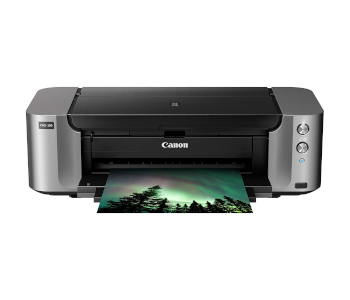
Often reserved for the final steps of production, painting, and labeling is often a way for finished goods to be personalized or branded. However, labeling can also be done in the intermediate steps of production as a means for traceability, especially in high-volume assembly lines.
Inkjet printing
Inkjet printing uses the same technology as the standard home and office printers we have nowadays. Basically, the process works by ejecting droplets off the nozzle and letting them pass through an electric field that charges the ink particles. An electrified plate then influences the trajectory of the ink particles as they hit the substrate material, creating a faithful reproduction of the reference digital image.
Another option is to have each nozzle of the print head adjacent to a piezoelectric crystal that produces vibrations when it receives a current. This allows a printer to control which nozzle will eject an ink droplet at any particular moment.
The choice of inks is another important aspect of inkjet printing. Most inks are solvent-based, leaving legible and near-permanent marks through the evaporation of the solvent vehicle. Other inks are cured by UV radiation through the addition of photo-initiator compounds.
The main advantage of inkjet printing as an industrial labeling technique is its simplicity. Inkjet printers are cheap, fairly common, and are easy to operate. However, the marks made by inkjet printers are not as permanent as those made by engravers.
Rotary engraving
In rotary engraving, a rotary tool is used to cut away at the material to create shallow but permanent marks. Modern rotary engravers now benefit from CNC technology, which means that the movement of the cutting tool is automated and free from human error.
Even with the addition of CNC systems, rotary engravers are still fairly common and very cheap. They work for virtually all types of materials, although some tooling changes may be in order. Maintenance of rotary engravers is easy, although it may have to be done quite frequently.
There is one major flaw of rotary engravers – the fact that they expose the workpiece to elevated levels of stress. Not only does the cutting action generate a lot of stress and friction, but the workpiece also needs to be firmly clamped in place. This may not be suitable for highly fragile items, such as glass products or printed circuit boards.
Laser engraving
In laser engraving, a concentrated beam of light delivers high levels of energy onto the material to create highly detailed, intricate, and permanent marks. This is done either through a process of ablation, or the removal of material via sublimation, or oxidation of the material.
The biggest advantage of laser engraving is its superior resolution. Lasers can be as small as 1/1000 of an inch, making them perfectly capable of highly intricate details like small text, fancy fonts, QR codes, and even photorealistic designs. In terms of design freedom, no other marking technology can surpass laser engraving.
Being a non-contact technology, laser engraving also does not expose the workpiece to any unnecessary stress. A workpiece does not even need to be clamped in place. This makes laser engraving particularly suited to working on fragile materials.
There is a downside, of course – the fact that laser engravers are very expensive. Even a desktop-scale laser engraver can cost anywhere between $8000 to $10,000. In comparison, a similarly sized rotary engraver will cost about half that amount. Despite all its technological advantages, the economics of laser engraving has kept it from becoming more competitive with more old-fashioned marking solutions.
Final thoughts
Despite the long list of manufacturing processes we’ve come up with here, this is but a fraction of all the processes used across all the manufacturing industries When it comes to translating raw materials to finished goods, there is really no single path to take. As we’ve seen from our list, technology provides so many options at every step of the manufacturing process.
Some of these methods have been around for a long time – die casting, forging, and welding are some examples of techniques that have been used for several decades. Others, like laser engraving and 3D printing, have risen to prominence more recently. This proves that manufacturing isn’t a field where the adage “out with the old, in with the new” is applicable. As more methods are developed, we only expect the toolkit of manufacturing industries to grow further.

